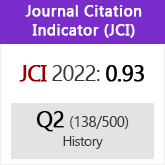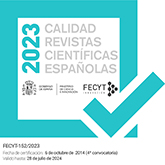Reproduciendo acero de crisol: una guía práctica y un análisis comparativo con manuscritos persas
DOI:
https://doi.org/10.3989/gladius.2013.0007Palabras clave:
Acero Persa de Crisol, Acero de Damasco, Armas Blancas, Manuscritos Persas, ReproducciónResumen
Los antiguos manuscritos persas, tales como Ta’id Besârat, emplean diversos términos para definir y referirse al acero de crisol o acero de Damasco y a diversos tipos de espada. Sin embargo, existen pocos manuscritos que describan el modo en que se elaboraban los lingotes y hojas de acero de crisol, entre ellos el manuscrito Gŏharnâme. El presente artículo describe el proceso de elaboración del acero de crisol tal y como lo refieren los manuscritos persas, así como una moderna reproducción del mismo realizada por el forjador finlandés Niko Hynninen.
Descargas
Citas
Attār Neyšāburi, A. (1993/1372): Manteq al-Teyr [Converstaion of the Birds]. Annotated by Seyyed Sādeq Goharin. Tehrān: Šerkat-e Entešārāt-e Elmi va Farhangi.
Beyruni, A. (1974/1353): Al-Jamâhir fi Marefat al-Jawâher [Sum of Knowledge about Precious Stones]. Translated by Dr. Mohammad Ali Najafi and Dr. Mahyâr Xalili. Tehrân: Madrese-ye Âli Kâx-e Dâneð.
Jŏhari Nezâmi, M. (2004/1383): Javâhernâme-ye Nezâmi [The Book of Jewels of Nezâmi]. Annoated by Iraj Afðâr. Tehrân: Mirâs-e Maktub.
Kâði, A. (1956/1335): Arâyes al-Javâher [Brides of Jewels]. Handwritten Manuscript. Copied by Mojtabâ Minavi. Tehrân: Ketâbxâne-ye Dâneðgâh-e Tehrân.
Mansur, M. (1975/1354): Gŏharnâme [The Book of Jewels]. Annotated by Manuèehr Sotude. Farhang-e Irân Zamin. Volume 4, Second Edition.
Mirzā L. (1706-1707:1118 or 1696-1697/1108): Ta’id Besārat [Aid to Sight]. Handwritten Manuscript on Swords and Swordmaking in the British Library.
Mobârak Ðâh Faxr-E Modabbar, M. (1967/1346): Âdâb al-Harb va al- al-šojâ-e [The Customs of War and Bravery]. Annotated by Ahmad Soheili Xânsari. Tehrân: Eqbâl.
Mohammad P. (1956/1335): Farhang-e Ânendrâj [The Lexicon of Ânendrâj]. Written by Mohammad Pâdeðâh known as Ðâd with the Assistence of his Two Brothers in India in 1306 Hegira (1888 C.E.). Seven Volumes. Under the Auspices of Mohammad Dabir Siyâqi. Tehrân: Ketâbxâne-ye Xayyâm.
Moqadasi, Š. (1980/1361): Ahsan al-Taqāsim fi Ma’refat-e al-Qālim [Best Divisions for Knowledge of Regions]. Translated by Dr. Alinaqi Monzavi. Tehrān: Čāp-e Kāviyān.
Nasireldin Tusi, X. (1574/982 Hegira): Tansuxnâme [Book of Tansux]. Handwritten Manuscript from 982 Hegira (1574 C.E.). Tehrân: Ketâbxâne-ye Markazi va Markaz-e Asnâd-e Dâneðgâh-e Tehrân.
Nezâmi Ganje’i, N. (2007/1385a): šarafnâme [Book of Glory]. Annotated by Hasan Vahid Dastgardi. Introduction by Sa’id Hamidiyân. Tehrân: Naðr-e Afkâr.
Nezâmi Ganje’i, N. (2007/1385b): Maxzan al-Asrâr [Storehouse of Mysteries]. Annotated by Hasan Vahid Dastgardi. Introduction by Sa’id Hamidiyân. Tehrân: Naðr-e Afkâr.
Onsori Balxi, A. (1990/1369): Aš’âr-e Onsori Balxi [Poems of Onsori Balxi]. Moqaddame [Introduction] by Mohammad Dabir Siyâqi. Tehrân: Enteðârât-e Amir Kabir.
Resâle-Ye Èâhrom [Fourth Treatise] (1985/1374): In: Â’in Qalandari: Moðtamel bar Èâhr Resâle dar Bâb-e Qalandari, Xâksâri, Ferqe-ye Ajam va Soxanvari [The Rules and Doctrines of Qalandari: Including Four Treatises with the Topics of Qalandari, Xâksâri, Ferqe-ye Ajjam, and Soxanvari]. Annotated by Seyyed Abutâleb Mir Âbedini and Mehran Afðâri. Tehrân: Enteðârât-e Farâravân, pp. 333–457.
Sa’d Salmân, M. (1995/1374): Divân-e Mas’ud Sa’d Salmân (The Collected Poems of Mas’ud Sa’d Salmân). Annotated by Raðid Yâsemi. Tehrân: Mo’assese-ye Enteðârâte-e Negâh.
Taflisi, H. (1975/1354): Bayân al-Sanâ’ât [About the Crafts]. Farhang Irân Zamin. Volume 5, second Edition.
Xayyâm-E Neyðâburi, O. (2003/1382): Nŏruznâme [The Book of Nowrûz]. Annotated by Ali Hosuri. Tehrân: Ceðme.
Secondary Iranian Sources
Afšār, I. (1975/1354): Mogaddame [Introduction]. In: Hobeyš ben Ebrāhim ben Mohammad Taflisi, Bayān al-Sanā’āt. Farhang Irān Zamin, pp. 279-297.
Dehxodā, A. (2006): Logatnȃme-ye Dehxodȃ (The Lexicon of Dehxodȃ). Tehrān: The University of Tehrān Press.
Ehsāni, M. T. (2003/1382): Haft Hezār Sal Honar Felezkāri Dar Irān [Seven Thousand Years of the Art of Metalworking in Iran]. Tehran: Sherkate Entešārāate Elmi Va Farhangi.
Emâm Ðuðtari, S. M. A. (1961/1339): Târix-e Megyâsât va Noqud dar Hokumat-e Eslâmi [Units and Coins under Islamic Rule in the Classical Period]. Tehrân: Èâpxâneye Dâneðsarâye Âli.
Najafi, M. A. and Xalili, M. (1974/1353): Barrasi Vaz’e Xārazm [An Investigation of the Situation in Kharazm]. In: Abu Reihān Beiruni, Al-Jamāhir fi Marefat al-Jawāher, Tehrān: Madrese-ye li Kāx-e Dāneš, pp. 1-10.
Soheyli Xānsari, A. (1967/1346): Sar āz [Introducion]. In: Mohammad ibn Mansur ibn Said Mobārak Šāh Faxr-e Modabbar, āb al-Harb va al-Šojā-e, Tehrān: Eqbāl, pp. 3-31.
Sotude, M. (1975/1354): Gŏharnāme Tālif-e Mohammad ben Mansur [The Book of Jewels written by Mohammad ben Mansur]. In: Gŏharnāme, Mohammad ben Mansur, Farhang-e Irān Zamin, p. 185.
Secondary International Sources
Allan, J. and Gilmour, B. (2000): Persian Steel: The Tanavoli Collection. Oxford: Oxford University Press.
Barnett, M.R., Balasubramaniam, R., Kumar, V. and MacRae, C. (2009): “Correlation between Microstructure and Phosphorus Segregation in a Hypereutectoid Wootz Steel” Festschrift in Honour of Prof. T. R. Anantharaman on the Occasion of his 80th Birthday, 44, pp. 2192-2197.
Feuerbach, A. (2002a): Crucible Steel in Central Asia: Production, Use, and Origins. Diss. Phil. London.
Feuerbach, A. (2002b): Crucible Steel in Central Asia: Production, Use, and Origins.
Figiel, L.S. (1991): On Damascus Steel. Atlantis: Atlantis Art Press.
Floor, W. (2003): Traditional Crafts in Qajar Iran (1800 – 1925). Costa Mesa: Mazda Publishers.
Gadadhar, S. and Balasubramaniam, R. (2004): Studies of Phosphoric Irons for Concrete Reinforcement Applications, “International Symposium of Research Students on Material Science and Engineering”, Dec, 20-22, 2004, pp. 1-11, http://metallurgy.iitm.ac.in/isrs/isrs04/cd/content/Papers/AIS/OR-AIS-4.pdf.
Grancsay, S. V. (1957): The New Galleries of Oriental Arms and Armor. The Metropolitan Museum of Art (New York) N.S. 16: 241–256.
Hoyland, R. G. and Gilmour, B. (2006): Medieval Islamic Swords and Swordmaking: Kindi’s Treatise ‘On Swords and their Kinds.’ Oxford: Gibb Memorial Trust.
Moshtagh Khorasani, M. (2007): Gedichte und Schwerter: Waffenklassifizierung und Tigelstahlrezept des Omar Khayyam Neishaburi. Hephaistos, 11/12, pp. 26-27.
Moshtagh Khorasani, M. (2008): “Reviviendo el Arte Ancestral de Elaborar Acero Persa al Crisol para Armas Blancas”, Revista de Artes Marciales Asiáticas, Volumen 3, Número 2 (66–79), pp. 66–79.
Verhoeven, J. D., Pendray, A. H. and Dauksh, W. E. (1998): ”The Key Role of Impurities in Ancient Damascus Steel blades”. Journal of Metallurgy, 50, pp. 58-64.
Zakey, A. R. (1961): “Introduction to the Study of Islamic Arms and Armour”. In: Gladius (Madrid) 1, pp. 17–29.
Zakey, A. R. (1965): On Islamic Swords. Studies in Islamic Art and Architecture in Honour of K.A.C. Cresswell: 270-291.
Additional Readings
Lesuer, D.R., Syn, C.K., Goldberg, A., Wadsworth, J. and Sherby, O.D. (1993): The Case for Ultrahigh-Carbon Steels as Structural Materials. JOM (Journal of Metals). August 1993, Volume 45, Issue 8, pp. 40-46. http://dx.doi.org/10.1007/BF03222405
Moshtagh Khorasani, M. (2006): Arms and Armor from Iran: the Bronze Age to the End of the Qajar Period. Tübingen: Legat Verlag.
Moshtagh Khorasani, M. (2007): La imponente Belleza de las Armas Blancas Persas Elaboradas con Acero de Damasco. Revista de Artes Marciales Asiáticas, Volumen 2 Número 4 (32-45), pp. 32-45.
Moshtagh Khorasani, M. (2010): Lexicon of Arms and Armor from Iran: A Study of Symbols and Terminology. Tübingen: Legat Verlag.
Moshtagh Khorasani, M. (2011): Restoring the Lion’s Claw. Classic Arms and Militaria, Volume XVIII, Issue 2, April/May 2011, pp. 40-43.
Sachse, M. (1993): Damaszener Stahl: Mythos, Geschichte, Technik, Anwendung. Düsseldorf: Stahleisen. Düsseldorf: Stahleisen.
Smith, K. S. (1988): A History of Metallography: The Development of Ideas on the Structure of Metals before 1890. Cambridge: MIT Press.
Tylecote, R.F. (1976): A History of Metallurgy. Institute of Materials, - University of Queensland.
Verhoeven, J.D. (2002): “Genuine Damascus steel: a type of banded microstructure in hypereutectic steels”. Steel Research, 73, pp. 356-365
Verhoeven, J. D., Pendray, A. H. and Gibson, E. D. (1996): “Wootz Damascus Steel Blades”, Materials Characterization, 37, pp. 9-22. http://dx.doi.org/10.1016/S1044-5803(96)00019-8
Zeller, R. and Rohrer, E. F. (1955): Orientalische Sammlung Henri Moser-Charlottenfels:Beschreibender Katalog der Waffensammlung. Bern: Kommissionsverlag von K.J. Wyß Erben AG.
Descargas
Publicado
Cómo citar
Número
Sección
Licencia
Derechos de autor 2013 Consejo Superior de Investigaciones Científicas (CSIC)

Esta obra está bajo una licencia internacional Creative Commons Atribución 4.0.
© CSIC. Los originales publicados en las ediciones impresa y electrónica de esta Revista son propiedad del Consejo Superior de Investigaciones Científicas, siendo necesario citar la procedencia en cualquier reproducción parcial o total.Salvo indicación contraria, todos los contenidos de la edición electrónica se distribuyen bajo una licencia de uso y distribución “Creative Commons Reconocimiento 4.0 Internacional ” (CC BY 4.0). Puede consultar desde aquí la versión informativa y el texto legal de la licencia. Esta circunstancia ha de hacerse constar expresamente de esta forma cuando sea necesario.
No se autoriza el depósito en repositorios, páginas web personales o similares de cualquier otra versión distinta a la publicada por el editor.














